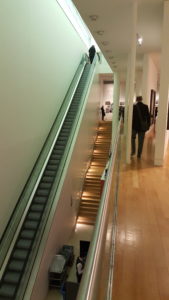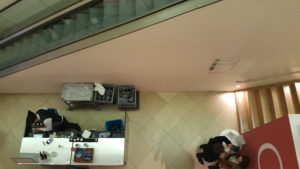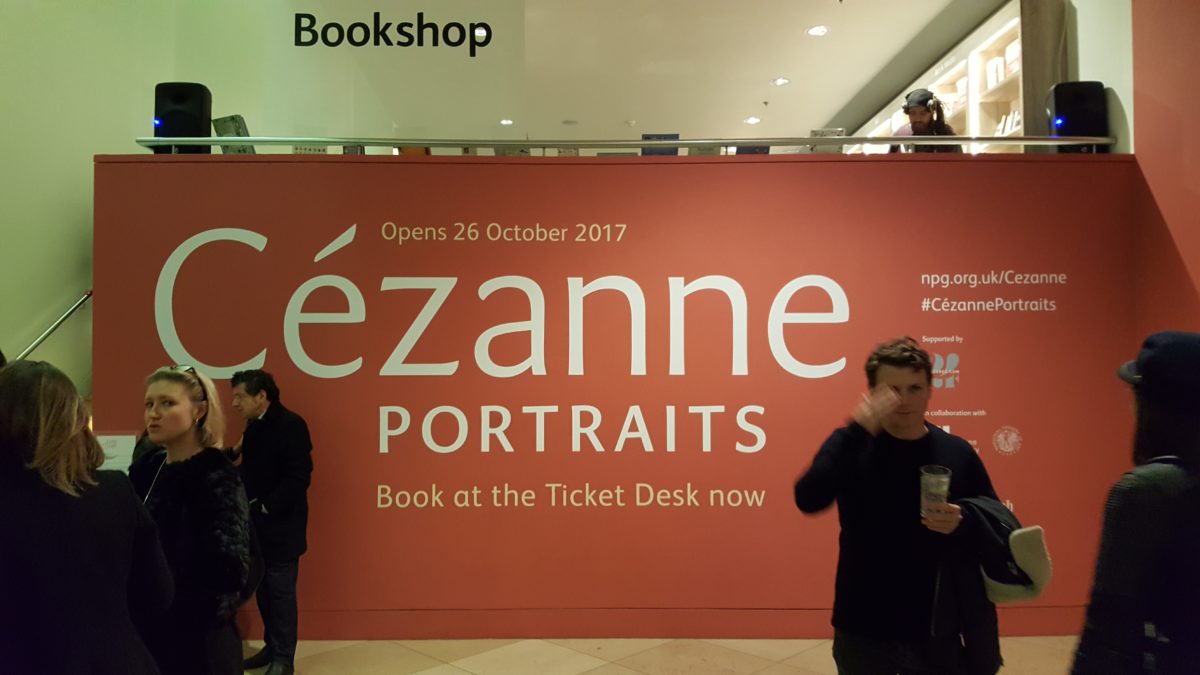Cézanne Portraits & National Portrait Gallery Lates //LAST CHANCE TO SEE//
 Those with around £20 and a few hours in London to spare this weekend should get themselves to the National Portrait Gallery, where the exhibition Cézanne Portraits is due to close on Sunday. The exhibition is organised by the Musée d’Orsay and the National Gallery of Art in Washington as well as the National Portrait Gallery, and this combined clout shows in the quality of the loans. And the loans matter: the exhibition sets out to explore Cézanne’s development as a portrait painter, to which the series he painted of the same subject were key. To take one example, portraits of his wife Hortense in a red dress are now scattered in São Paolo, Chicago and New York, but reunited here. Other loans are gathered from Scandinavia, Russia, regional museums in the US, private collections, and the list goes on. Altogether, around a quarter of all the portraits Cézanne painted are on the walls of the NPG. Not a bad start for the curators to work with.
Those with around £20 and a few hours in London to spare this weekend should get themselves to the National Portrait Gallery, where the exhibition Cézanne Portraits is due to close on Sunday. The exhibition is organised by the Musée d’Orsay and the National Gallery of Art in Washington as well as the National Portrait Gallery, and this combined clout shows in the quality of the loans. And the loans matter: the exhibition sets out to explore Cézanne’s development as a portrait painter, to which the series he painted of the same subject were key. To take one example, portraits of his wife Hortense in a red dress are now scattered in São Paolo, Chicago and New York, but reunited here. Other loans are gathered from Scandinavia, Russia, regional museums in the US, private collections, and the list goes on. Altogether, around a quarter of all the portraits Cézanne painted are on the walls of the NPG. Not a bad start for the curators to work with.
As I mentioned, the exhibition aims to explore Cézanne’s development as a portrait painter, and has been hung therefore in largely chronological order. A few early paintings set the scene, and we are then taken through rooms in which the portraits are grouped by technique and by subject. The former starts with a self-proclaimed ‘ballsy’ (‘couillarde’) application of paint with a palette knife, through experiments with building up forms and patterns of colour, to later portraits where the descriptions are of shapes (cones, ovals), and the finished products not as uniform, some substantially reworked into thick crusts of paint. The latter grouping, by subject, somewhat inevitably weaves in a second narrative, that of Cézanne’s personal life. Born into a pretty comfortable existence, and dependent on a stipend from his father to supplement his artistic income, Cézanne hid the existence of a mistress (later wife) and son for some time. I haven’t read a huge amount of (or any) art historical analysis of Cézanne’s family relationships, but gleaned enough from the painting labels to understand that critics have historically been quite harsh towards Hortense (eventually Mme Cézanne) and this is unfair. Hortense crops up pretty regularly in the exhibition, not surprisingly as she was the most frequent subject of Cézanne’s portraits. The exhibition texts and labels drop in further biographical information: he doted on his son but didn’t see him much in later life; he didn’t always live with Hortense even when they were married; now he’s old and living mostly by himself. What this biographical thread does is to bring to the forefront the importance Cézanne placed on painting portraits as records of the subject rather than as psychological likenesses. When we look at a later portrait of Hortense, are we trying to project onto it our knowledge that their relationship has become more tense and distant? Or is that distance perhaps there despite Cézanne’s best efforts? Who can say, but it does provide a useful way of questioning our (my) assumption that portraits will always tell us something about their subject. No, in the case of Cézanne, at least, we are to see Hortense in the same way we would look at the Mont St Victoire, or Cézanne’s bald head in the same way we would an apple in a fruit bowl.
So all in all it’s a pretty good exhibition: solid curation of a good selection of paintings, insightful, able to give a (limited) sense of a century of art history while you peruse the works, and also able to give a bit of balance: Cézanne was indeed devoted to painting but wasn’t always a grumpy old man and loved his son, Hortense isn’t as bad as some have made her out to be, and all in all Cézanne’s portraits give flashes of some of what was to come in art in the guise of Matisse or Picasso. Do go and see if it you’re in London and haven’t already (or are in Washington when it transfers there).

The other thing I did while I was at the National Portrait Gallery was have a look around the permanent gallery spaces. This was a Thursday evening, and therefore their Late Shift, a regular late opening with additional events offering every Thursday and Friday. I hadn’t been for ages, but have always liked the NPG’s Late Shift. Firstly, the fact that it happens 2 days out of 7 means it isn’t jam packed like other London museum late openings tend to be. Secondly, I am still a bit hung up on this idea that the museum’s genesis (commemorating national heroes, nobility and other note-worthies) is a bit old fashioned and not very inclusive. I cling to this view despite the fact that the gallery has obviously worked to bring more diversity into its collections, but in any case I think this (mostly) free programme of events, from drawing classes to talks to a regular DJ, doesn’t just bring in new punters but also shines new lights on the collections. The programme always includes some ‘queering the collection’ type LGBTQ events, as well as something disability-inclusive like BSL tours. At the moment, with the centenary of women’s voting rights in the UK, there are temporary displays, talks and tours on suffragettes and feminism. I can’t say I get really involved in the events programme – mostly when I have been to Late Shift I’ve maybe had a drink and then wandered around the gallery with a bit of background music, but I really like that it exists. So if you’re in central London on a Thursday or Friday and fancy some culture with your after work drink, get down there!


